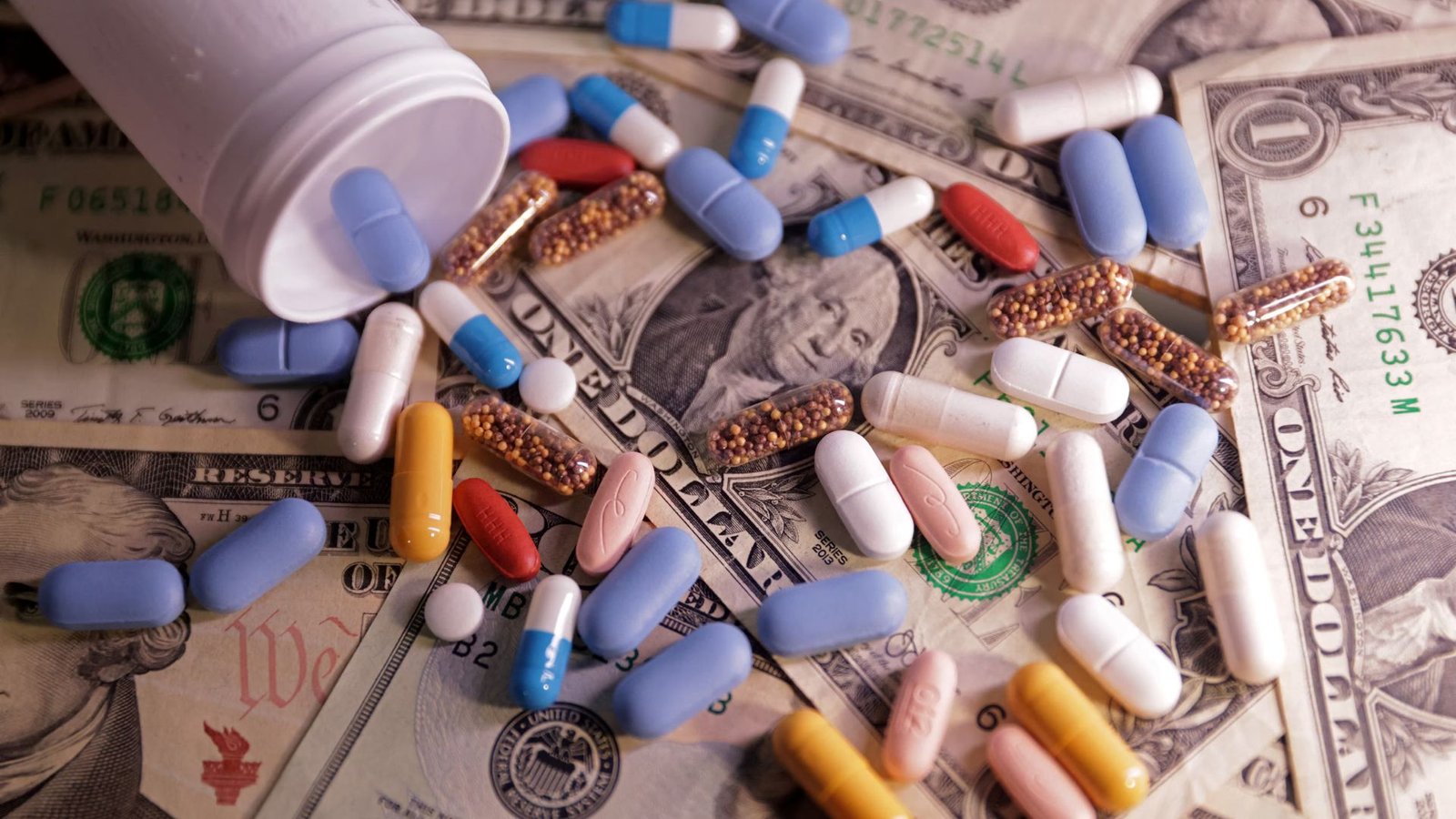Prescription drug prices have long been a topic of discussion, and as we move toward 2025, there are significant changes on the horizon. The future of prescription drug pricing is expected to be influenced by a combination of government policies, market dynamics, and technological innovations. In this article, we will explore what these factors mean for patients, healthcare providers, and pharmaceutical companies in the coming years.

1. Government Intervention in Drug Pricing
One of the most talked-about topics when it comes to the future of prescription drug pricing is the role of government intervention. Over the past few years, governments around the world have been actively discussing ways to control the rising costs of prescription drugs.
- Price Negotiation: In the U.S., for example, there has been a push for the government to negotiate prices for certain high-cost drugs, especially those under Medicare. By 2025, more countries may adopt similar strategies, allowing governments to negotiate prices with pharmaceutical companies, potentially lowering costs for consumers.
- Price Caps: Some countries have already implemented price caps on essential medications, and this trend could expand to include more drugs as governments aim to make healthcare more affordable. This would place a limit on how much pharmaceutical companies can charge for certain drugs.
Government intervention could significantly impact the future pricing of prescription drugs by making them more affordable and accessible to the general population.
2. Growth of Generic and Biosimilar Drugs
Another factor that will likely affect prescription drug pricing in the future is the increasing availability of generic and biosimilar drugs. These alternatives to brand-name drugs have been proven to reduce healthcare costs while maintaining effectiveness.
- Generic Drugs: As more patents on brand-name drugs expire, there will be a larger number of generic drugs entering the market. This will help drive prices down due to increased competition.
- Biosimilars: Similar to generic drugs, biosimilars are lower-cost alternatives to biologic medications. As the development of biosimilars accelerates, we can expect them to play a significant role in lowering the cost of biological treatments for conditions like cancer and autoimmune diseases.
With the rise of generics and biosimilars, patients will have more affordable options for treatment, which could lead to a reduction in the overall cost of prescription drugs.
3. Technological Advancements and Digital Health
The role of technology in prescription drug pricing is expected to increase significantly by 2025. Digital health platforms and new technologies will likely streamline the prescription process, making it more efficient and potentially lowering costs.
- Telemedicine and Online Prescriptions: The use of telemedicine to prescribe medications remotely has grown in popularity. With more people accessing healthcare online, the prescription process could become faster and more efficient, leading to fewer administrative costs.
- Blockchain Technology: Blockchain technology has the potential to improve the transparency and efficiency of the pharmaceutical supply chain. By tracking drugs from production to distribution, blockchain can help reduce fraud and waste, lowering overall drug costs.
These technological advancements could reduce inefficiencies in the prescription drug market, ultimately leading to more affordable medications.
Discover New Avenues Beyond Business Listings
Beyond finding comprehensive business listings on Directory-Direct.com, users might also be interested in exploring the dynamic world of online entertainment. For those in Australia seeking engaging online experiences, online gambling australia presents a diverse range of gaming options and potential entertainment value. Explore this alternative avenue for leisure and see what excitement awaits.
4. Increased Price Transparency
In recent years, there has been growing pressure for greater transparency in drug pricing. By 2025, price transparency could play a key role in the future of prescription drug pricing.
- Drug Price Transparency Laws: Some countries and states are already introducing laws that require pharmaceutical companies to disclose the price of their drugs. By making prices more visible, patients will be better informed about the cost of their medications, which could encourage pharmaceutical companies to lower prices.
- Comparing Prices: As healthcare systems become more digitized, consumers may be able to easily compare the prices of prescription drugs across pharmacies. This will empower patients to make better-informed decisions about where to purchase their medications, leading to potential price competition.
Price transparency could lead to more competitive drug pricing, allowing consumers to make cost-effective choices and potentially driving down prices in the market.
5. The Role of Pharmacy Benefit Managers (PBMs)
Pharmacy Benefit Managers (PBMs) are intermediaries between insurance companies, drug manufacturers, and pharmacies. Their role in negotiating drug prices will continue to evolve, influencing how much patients pay for their prescriptions.
- Negotiation Power: PBMs negotiate discounts on drugs, which can help reduce costs for consumers. However, their influence on drug pricing has been a source of controversy, as some argue that their practices can lead to higher out-of-pocket costs for patients.
- Transparency and Reform: As PBMs face increasing scrutiny, there may be reforms in the way they operate. Greater transparency in their pricing strategies could result in lower drug prices for patients.
PBMs will continue to play a significant role in prescription drug pricing, and any reform in their practices could impact the overall affordability of medications.
6. Personalized Medicine and Targeted Treatments
The rise of personalized medicine—treatments tailored to an individual’s genetic makeup—will also impact the future of prescription drug pricing. These advanced treatments can be expensive, but they hold the potential for more effective treatments and better outcomes for patients.
- Precision Medicine: With precision medicine, doctors can prescribe drugs that are specifically suited to a patient’s needs, which can lead to more efficient and targeted treatments. This could reduce the number of ineffective treatments and lower overall healthcare costs in the long term.
- High-Value Treatments: While personalized treatments may be costly initially, they could ultimately lead to savings by reducing the need for trial-and-error approaches, hospitalizations, and other forms of costly care.
As the development of personalized medicine progresses, it could shape how drugs are priced, potentially making highly effective treatments available to more patients.
7. Global Market Dynamics and Competition
The global nature of the pharmaceutical industry means that drug prices are also influenced by international factors. Countries with higher pharmaceutical pricing, such as the United States, may see increased pressure from global competition.
- International Price Comparison: With more countries pushing for fairer drug pricing, pharmaceutical companies may be pressured to lower their prices to remain competitive on a global scale. Countries with lower drug prices may also influence the pricing strategies of major drug manufacturers.
- Importation of Drugs: Some regions may consider importing cheaper drugs from other countries, which could help drive down costs in their domestic markets.
Global market dynamics will play a role in shaping prescription drug pricing, especially as countries work together to find more affordable solutions for patients.
Conclusion
The future of prescription drug pricing in 2025 is likely to be shaped by a mix of government policies, technological advancements, market competition, and pricing transparency. As more generics and biosimilars enter the market, patients will have access to more affordable medications. Technological innovations, such as telemedicine and blockchain, will help reduce inefficiencies and improve the overall pharmaceutical supply chain. Additionally, government intervention and reforms in the role of Pharmacy Benefit Managers could lead to significant changes in how drugs are priced and sold.
While it’s impossible to predict exactly how prices will evolve, one thing is clear: the future of prescription drug pricing will focus on increasing accessibility and affordability for patients, ensuring that everyone has access to the medications they need.











